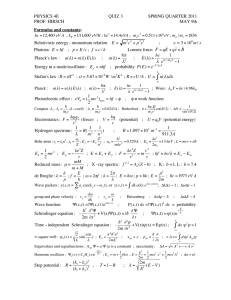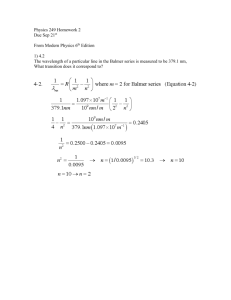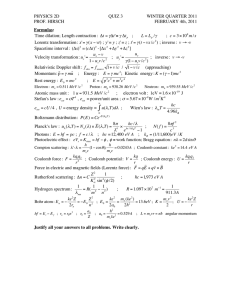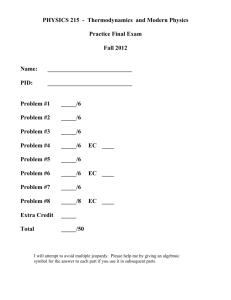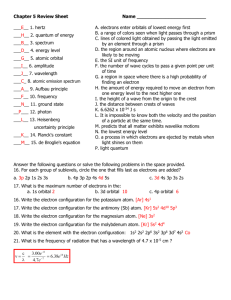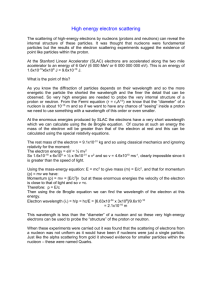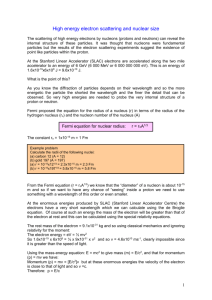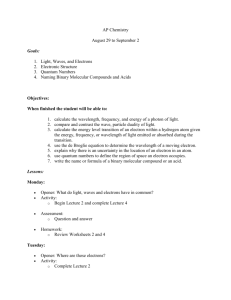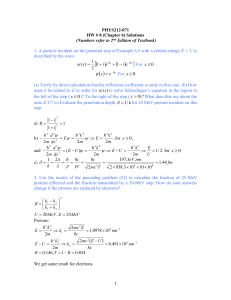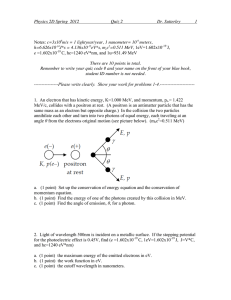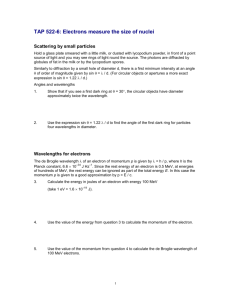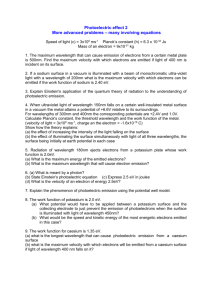PHYS 212-071
advertisement
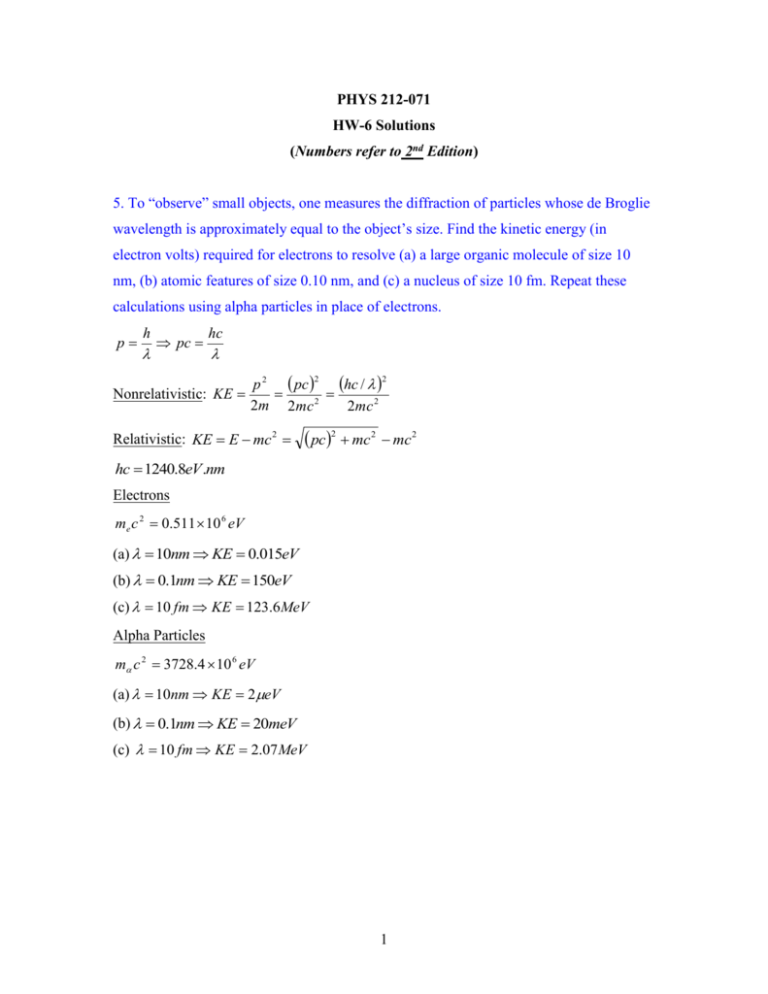
PHYS 212-071 HW-6 Solutions (Numbers refer to 2nd Edition) 5. To “observe” small objects, one measures the diffraction of particles whose de Broglie wavelength is approximately equal to the object’s size. Find the kinetic energy (in electron volts) required for electrons to resolve (a) a large organic molecule of size 10 nm, (b) atomic features of size 0.10 nm, and (c) a nucleus of size 10 fm. Repeat these calculations using alpha particles in place of electrons. p h pc hc hc / p 2 pc 2 2m 2mc 2mc 2 2 Nonrelativistic: KE Relativistic: KE E mc 2 2 pc2 mc 2 mc2 hc 1240.8eV .nm Electrons me c 2 0.511 10 6 eV (a) 10nm KE 0.015eV (b) 0.1nm KE 150eV (c) 10 fm KE 123.6MeV Alpha Particles m c 2 3728.4 10 6 eV (a) 10nm KE 2eV (b) 0.1nm KE 20meV (c) 10 fm KE 2.07 MeV 1 24. We wish to measure simultaneously the wavelength and position of a photon. Assume that the wavelength measurement gives 6000 Angstroms with an accuracy of one part in one million, i.e., 10 6 . What is the minimum uncertainty in the position of the photon? p h xp p h p p p x x x 2 2p 2 / h / 4 / 6000 A, 10 6 x min 4.8cm 29. An excited nucleus with a lifetime of 0.100 ns emits a ray of energy 2.00 MeV. Can the energy width (uncertainty in energy, E ) of this 2.00 MeV emission line be directly measured if the best detectors can measure energies to 5 eV? 0.100ns E 2.00MeV E exp 5eV 6.582 10 16 eV .s E width E width E width 3.3 10 8 eV Eexp 9 2 2 2 0.1 10 s The energy width cannot be resolved. 2 34. Robert Hofstadter won the 1961 Nobel Prize in Physics for his pioneering work in scattering 20-GeV electrons from nuclei. (a) What is the factor for a 20-GeV electron, v2 where 1 2 c 1 2 . What is the momentum of the electron in kg.m/s? (b) What is the wavelength of a 20-GeV electron and how does it compare to the size of a nucleus? E mc 2 E 20GeV 20 10 3 MeV mc 2 0.511MeV (a) 39139 (b) pc 20GeV p (c) 20 10 9 1.6 10 19 J p 10 17 kg.m / s 8 3 10 m / s h hc 1240.8eVnm 0.062 fm Nuclear size. p pc 20 10 9 eV 3




